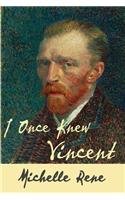I Once Knew Vincent
For a little over a year, Vincent Van Gogh lived with Clarina Maria Hoornik (Sien), an alcoholic prostitute. Her eight-year-old daughter Maria (Little Cat) narrates this fictional account of their relationship. The oppressive atmosphere of extreme poverty is only lifted when occasional checks arrive from Vincent’s preacher father or his long-suffering brother Theo, but these result in the humiliation of dependency. Art supplies cost money, which Maria thinks could be better spent on bread. Nonetheless, the little girl becomes Vincent’s first critic, and he accepts her judgment as to which of his sketches and paintings should be displayed when potential customers come by. Naturally, he never sells any. Sien keeps drinking in secret, and she eventually returns to turning occasional tricks through the pimping of her mother. Van Gogh comes across as a persistent moocher and a bit of a hypocrite who rationalizes living in sin with the idea that he is reforming Sien and forming a family.
The narration by a young girl, even a precocious one, limits what can be told. Maria appreciates his art, and mother and daughter serve as models. Samples of his work are reproduced in the text. Maria questions whether the art is worth the suffering, and the same question might occur to readers of this gloomy novel.










